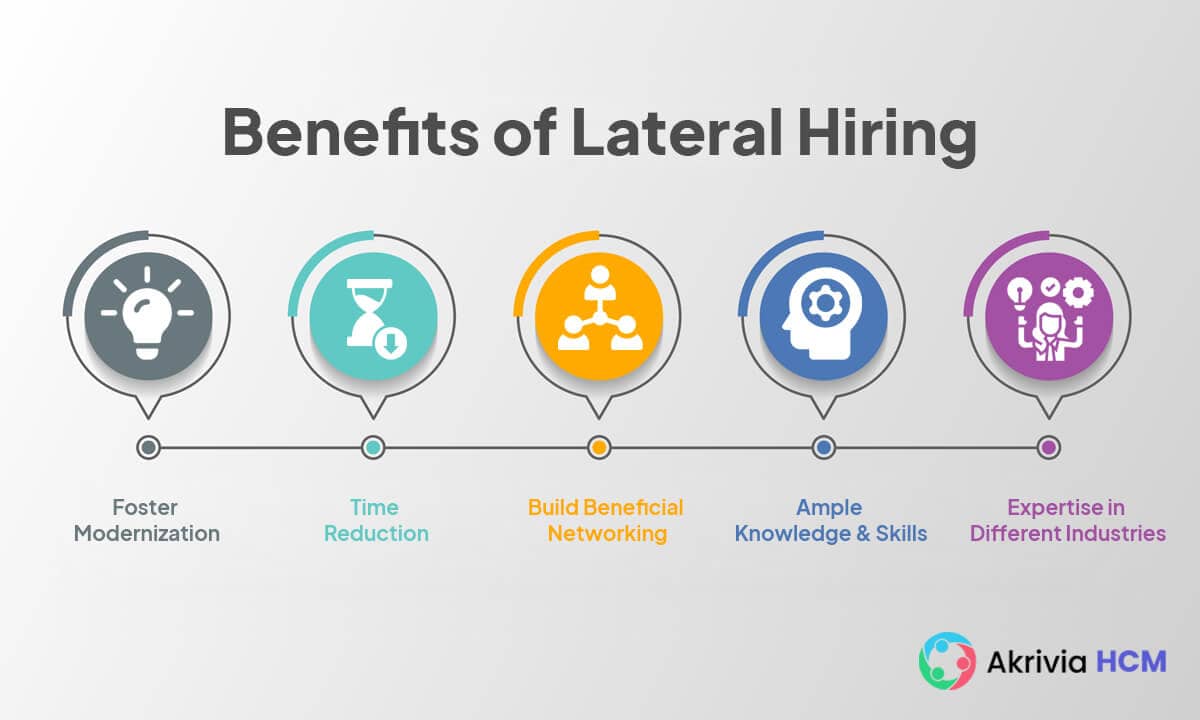Lateral hiring is the practice of hiring candidates with specific skillset you are looking for from within the company or externally. It’s considered a specialized hiring strategy that involves hiring individuals with the same kind of experience you are looking for from a competitor. The plan is to focus on hiring people with some work experience instead of someone without any work experience.
Lateral recruitment is challenging for human resources departments because candidates want to upgrade their career, and many people seek additional benefits and compensation commensurate with the added responsibilities of their new position. Unlike a mainstream hire, in which the candidate being considered for the position does not possess the requisite skills and expertise, a lateral hire sees an individual brought on board who has already demonstrated these characteristics.
You can follow these few steps for lateral recruitment
To improve your lateral hiring retention rate, you must understand that the issues are usually related to a company’s failure to integrate its employees into the company culture. The following are five steps to help ensure successful recruitment strategies:
Companies can reap many benefits by hiring experts in the lateral recruitment process. Let’s explore them below.

Lateral Hiring can help you in various ways to hire the top talent, but it requires continuous HR attention to find them. You can apply the above-mentioned steps to leverage lateral recruitment to grow your company.
Lateral hiring is good because it helps you build a brand reputation amongst competitors. Hiring top talent and retaining them is like making a statement about brand loyalty. Moreover, hiring the right candidates with the required skillset is better than hiring candidates who have little to no experience in the field.
Lateral hiring is about hiring candidates with similar roles/duties, while sourcing them internally or externally. But vertical hiring is about hiring candidates in higher or lower roles to assume roles within the organization.
An example of lateral recruitment is hiring a product marketing manager from a competitor brand for your brand. Lateral hiring is most suitable for higher executive roles where a specific skillset is required.
Let’s Recruit, Reward, and Retain
Your Workforce Together!
